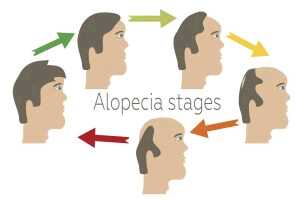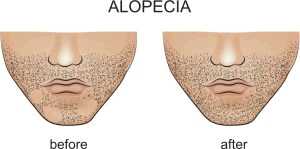
Diabetes can bring a host of unexpected symptoms. Some of these are quite mild, such as general nausea, while others are more severe (think nerve damage and chronic headaches).
One unexpected symptom of diabetes is hair loss.
Is Your Hair Loss Caused by Diabetes?
Diabetes-derived hair loss differs from general hair loss in a number of ways, the most significant of which is the actual cause of the condition. While people can experience hair loss due to aging, hormone deficiencies, and other factors directly related to age, men and women who have been diagnosed with Type 1 diabetes (T1D) will likely notice hair loss due to a condition called alopecia.
 This particular form of hair loss is unique to Type 1 sufferers; although men and women with Type 2 diabetes (T2D) can experience hair loss, this is usually due to poor circulation, and the hormonal imbalances brought about by diabetes. Conversely, Type 1 diabetes patients will likely experience hair loss due to alopecia, a medical condition.
This particular form of hair loss is unique to Type 1 sufferers; although men and women with Type 2 diabetes (T2D) can experience hair loss, this is usually due to poor circulation, and the hormonal imbalances brought about by diabetes. Conversely, Type 1 diabetes patients will likely experience hair loss due to alopecia, a medical condition.
What Is Alopecia?
Like Type 1, alopecia is an autoimmune disorder wherein the body begins to attack and damage hair follicles. This damage isn’t relegated entirely to your head; you might notice a loss of hair on your arms, legs, chest, and scalp. While the condition isn’t categorized as dangerous or in desperate need of treatment, hair loss can be emotionally and mentally damaging to men and women, which may lead them to seek treatment.
Like most autoimmune disorders, alopecia can seemingly come and go. Even though the condition is a permanent fixture, its effects can wax and wane, popping up for a few years, before gradually disappearing and appearing once more years later.
Alopecia Treatment
Fortunately, there are treatments for alopecia. The condition is diagnosed by a dermatologist, and the treatment method will depend largely upon the severity of your condition. Most treatments begin with steroids, whether topical or oral, and progress from there. Individual treatments can last up to 8 weeks before seeing a change in hair loss (and subsequent regrowth) but typically move to oral medications and topical treatments following the initial steroid dosages.
While these treatments can successfully encourage hair growth, due to its status as an autoimmune disorder, hair loss may be recurring over time, requiring additional treatment protocols. If you have Type 1 diabetes and you are experiencing hair loss, you may have a simple dip in hormone levels, or you may be experiencing the effects of alopecia.
ReferencesDiabetes Self Management. Accessed 4/24/17.
AAD. Accessed 4/24/17.
